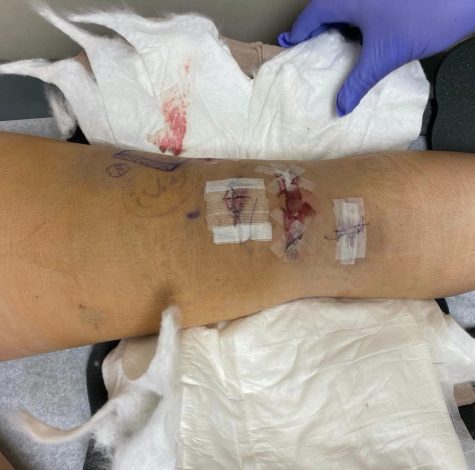Student athletes across the country work tirelessly to ensure that they are performing at the highest level both on the field and in the classroom. These individuals must learn how to balance their studies with their training, which is often a difficult task. Being a student athlete comes with great dedication and perseverance.
There are many factors that determine whether an athlete is physically performing at their best, including their sleep habits, diet, and overall health. However, even if an athlete is doing everything in their ability to perform well and stay healthy, injury is always a possibility.
The sport an athlete is competing in can alter their susceptibility towards certain injuries. Some more minor injuries, such as strains, sprains, and dislocations, happen in all sports. Contact sports especially have an increased risk of injury from blows to the body including fractures and contusions, or bruising.
In football, concussions are one of the most common injuries. Athletes can receive a concussion at any time, but the University of Rochester Medical Center found that competing in a high speed and aggressive contact sport such as football increases their risk significantly.
Volleyball, a non-contact sport, still bears many common injuries, including tendon and ligament tears. Brooklynn Pugner, a freshman volleyball player at Washington College, unfortunately suffered an ACL (anterior cruciate ligament) injury during her first collegiate season in September 2021. This ligament in the knee is essentially responsible for connecting the leg bones.
“The only thing I could think about when I first got hurt was how much pain I was in. I only started crying once we got to the training room, but it was not because of the pain- it was for the fear of how bad my injury was and the possibility of missing my freshman season,” said Pugner.
Pugner underwent surgery to repair her ACL injury as well as her meniscus, meaning she would miss the remainder of her freshman season followed by an extensive 8-to-9-month recovery period.
“The toughest part of my recovery so far is the frustration of not being able to do things that are so simple, such as walking without crutches, lifting my leg up, and putting shoes on by myself,” said Pugner.

“This injury has forced me to better appreciate the small things in life. Life is not all about sports so this experience has allowed me to refocus on what is truly important to me,” said Pugner.
ACL injuries are also common in women’s lacrosse. Caroline Pearce, a junior lacrosse player at Queens University of Charlotte, suffered an ACL injury at the end of the spring season in 2021. Pearce expressed similar thoughts and feelings about the type of injury and recovery.
“Coming out of surgery was rough. I struggled with not being able to walk on my own for the first 6 weeks after surgery,” said Pearce.
“I have learned that your body is a lot stronger than you think, and it is also important to listen to your body and take it easy when you have pain during recovery,” said Pearce.
Recovering from an injury, especially from an injury that requires surgery to fix, is hard both physically and mentally. According to the NCAA, possible emotional responses to an injury include sadness, anger, lack of motivation, frustration, and disengagement.
The recovery time for an ACL injury repair surgery with proper rehabilitation typically ranges from 8 to 12 months. This time away from training for one’s sport can prove to be especially hard mentally because most expect to bounce back, but it takes even more hard work to return to the level they were once competing.
Other than taking time away from competition, there is a large group of athletes that are left with substantial recovery times, if able to return at all, depending on the severity of their injury.
Most athletes live with the effects of their injuries later in life. Researchers from Stanford University found that previous joint injuries may increase the risk of developing arthritis. Researchers also found former college athletes had higher levels of depression, fatigue, and poor sleep compared to nonathletes.
Not everyone understands the impact that injuries have on college athletes. As a student athlete, I have struggled, and I see my teammates struggle with injuries. It is important that we support and check on one another when going through the recovery process and make sure we do everything possible to keep our minds and bodies healthy.

Leave a Reply